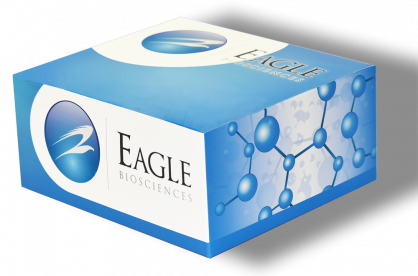Mouse Rat 25-OH Vitamin D ELISA
Mouse Rat 25-OH Vitamin D ELISA Developed and Manufactured in the USA. Formally known as Multispecies 25-OH Vitamin D ELISA (VID91-K01)
Size: 1×96 wells
Sensitivity: 4.78 ng/mL
Dynamic Range: 9 – 150 ng/mL
Incubation Time: 2 hours
Sample Type: Serum, Plasma
Sample Species: Mouse, Rat, Human, Dog, Cat, Horse, Monkey, Pig and Cow.
Sample Size: 25 µL
Alternative Names: Rodent 25-OH Vitamin D, 25-hydroxy Vitamin D ELISA, Multispecies 25-OH Vitamin D ELISA.
For Research Use Only
Controls Included
Assay Principle
This Mouse Rat 25-OH Vitamin D ELISA is designed developed and produced for the quantitative measurement of total 25-OH Vitamin D2/3 in serum/plasma utilizing the competitive immunoassay technique. This assay utilizes a monoclonal antibody that binds to both 25-OH Vitamin D2 and 25-OH Vitamin D3 equally. Assay calibrators, controls and test samples are added directly to wells of a microtiter plate that is coated with specific anti-25-OH Vitamin D2, D3 antibody. A buffer designed to release Vitamin D from binding proteins is then added to the wells. After the first incubation period, unbound material is washed away and biotinylated Vitamin D analogue is added to the wells and binds to remaining antibody sites. After the second incubation period, unbound biotin-D is washed away and horseradish peroxidase (HRP) conjugated streptavidin is added to each well. During the third incubation step, an immune complex of well coated “vitamin D antibody – vitamin D, biotin D and HRP conjugated streptavidin” is formed. The unbound matrix is removed in the subsequent washing steps. For the detection of this immunocomplex, the well is then incubated with a substrate solution in a timed reaction, which is terminated with an acidic reagent (ELISA stop solution). The absorbance is then measured in a spectrophotometric microplate reader. The enzymatic activity of the immunocomplex bound to the wall of each microtiter well is inversely proportional to the amount of total 25-OH Vitamin D2/3 in the test sample. A calibration curve is generated by plotting the absorbance versus the respective Vitamin D concentration for each calibrator on a 4-parameter or point to point curve fitting. The concentration of total 25-OH Vitamin D2/3 in test samples is determined directly from this calibration curve.
Products Related to Mouse Rat 25-OH Vitamin D ELISA
25-OH Vitamin D ELISA Assay Kit
25-OH Vitamin D HPLC Assay Kit



